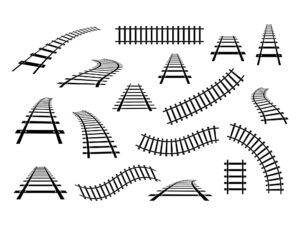
When a large vessel carrying 5 thousand containers arrives at a seaport terminal, the terminal is, for a moment, overloaded. But this moment does not need to last long, if all parties in a supply chain cooperate. A dream scenario?
Dominik Landa, Senior Executive in Maritime, Logistics and SCM at HHLA believes it is challenging but possible. If there is one key word in making this happen, it is cooperation. An experienced terminal professional, Landa will be one of the panelists at the RailFreight Connects summit, to be held in Bremen on 6 & 7 September. At this summit, professionals from the rail, port and terminal industries come together to discuss this cooperation.
Only a few ports can afford to be only a transshipment hub
Intermodal links are very important for practically all European ports, Landa says. “There are only a few ports that can afford to be only a transshipment hub, and that is mostly only because they do not have a noteworthy hinterland. You can have the best terminal in the world, but without a good hinterland network of roads and rails, you are going to have containers dwelling over your terminal and that is not what you want.”
“However, the industry is also struggling a little bit as I see it”, he continues. The vessels are getting larger and consequently terminals are getting larger. The industry is subject to change. It is not uncommon for a vessel to have five to ten thousand containers onboard. These need to be discharged and the same number of containers needs to be reloaded. Moreover, these containers need to depart.”
All parties need to be efficient
It is this challenge that drives ports and terminals to increase their level of efficiency. The ports want to discharge these containers as fast and efficiently as possible, Landa explains. Large European ports are indeed impressive in handling the large-scale operations, especially with the digitalisation of these operations that has taken place over the last years. But how well capable is the rail freight industry to adapt to these changes?
That is the crux of the matter, if you ask Landa. “We can be super efficient in the port, but if not all actors in the chain are efficient, we will be suboptimal in what we do. Therefore, we should work together to fight these inefficiencies. If we know that e train arrives at the port at a certain time, we can also make sure that the ship is ready to be unloaded and reloaded for the train to start its return journey right away. If this works out, it can be easy.”
What is in it for rail?
But all these large numbers and fast handling times, are these good news for rail? In the end, a train can take a limited number of containers and even though longer trains are making an entrance, this scale increase is not at all happening at the same pace as that in the maritime industry. Moreover, the rail industry is not known for its reliability.
Yet, the advantage of efficiency is certainly a shared one, argues Landa. “Rail operators for example have expensive rail sets and high costs involved with running a train. You want to use these assets as efficiently as possible. All parties want for a train to leave the terminal as soon as possible.”
Ports pushing infrastructure managers
Hinterland infrastructure plays a great role in this as well, the HHLA professional says. In Europe port terminals are well aware of the need to serve their hinterland. They are as efficient as they can be. But often, they are pushing hinterland infrastructure providers to make sure the railway links are there to allow the ports to grow.”
“In the end, we all work for the same customers”, Landa concludes. We are working in the service industry. Customers demand efficiency. This is the name of the game. We need to provide according to the customer’s needs. If we don’t, they will use another port, terminal or railway network.